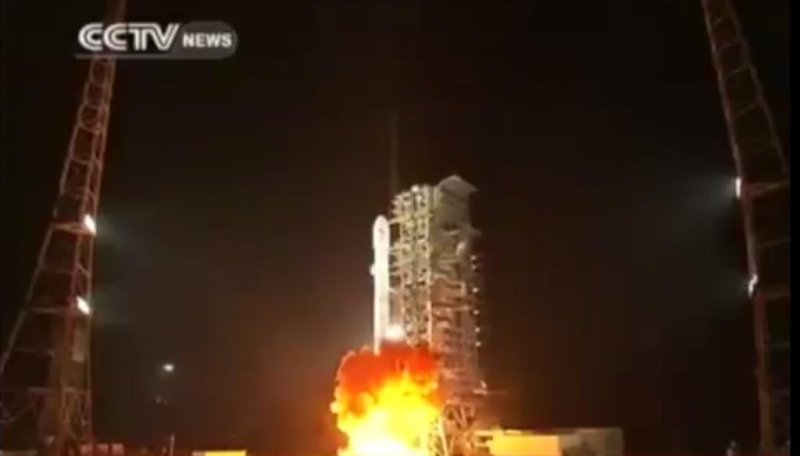The launch of China's Chang'e 3 mission, which will take a unmanned lunar rover to the moon, is seen as a precursor to China's ambition to have a manned mission to the moon. (Credit: Screenshot via CCTV)
Dec. 2 (UPI) -- China launched its unmanned rover to the moon in the early hours of the morning from Xichang in the south, long seen as a precursor to a manned mission.
China will be only the third country, after the U.S. and Russia, if they can successfully land the lunar module on the surface of the moon in mid-December.
The Chang'e 3 mission launched with a landing module and the rover, named Yutu in chinese. It was named after an online poll chose the name, a name which comes from the Chinese myth about a rabbit living on the moon as the pet of the lunar goddess Chang'e.
“We will strive for our space dream as part of the Chinese dream of national rejuvenation,” said Zhang Zhenshong, director of the Xichang Satellite Launch Center.
The 260-pound rover will for the first time set up a telescope on the surface of the moon to survey the lunar landscape. The landing module will land in the Sinus Iridum region, latin for "Bay of Rainbows", a flat volcanic plain thought to be relatively clear of large rocks, where it will use a ground-penetrating radar to look for natural resources below the surface of the moon.
U.S. scientists have said, however, that apart from the radar much of the instrumentation on board were also present on the U.S. and Russian rovers, suggesting that information from Yutu will not add much to their knowledge of the moon.
Apollo astronauts Eugene Cernan and Edwin "Buzz" Aldrin, recently suggested that looking at the size of the landing module, larger than required for the size of the rover, hints at China's larger goal to place a man on the moon.
The launch comes a day after India's Mars orbiter left the Earth's orbit on a 10-month journey to Mars.
[BBC]
[The Washington Post]















